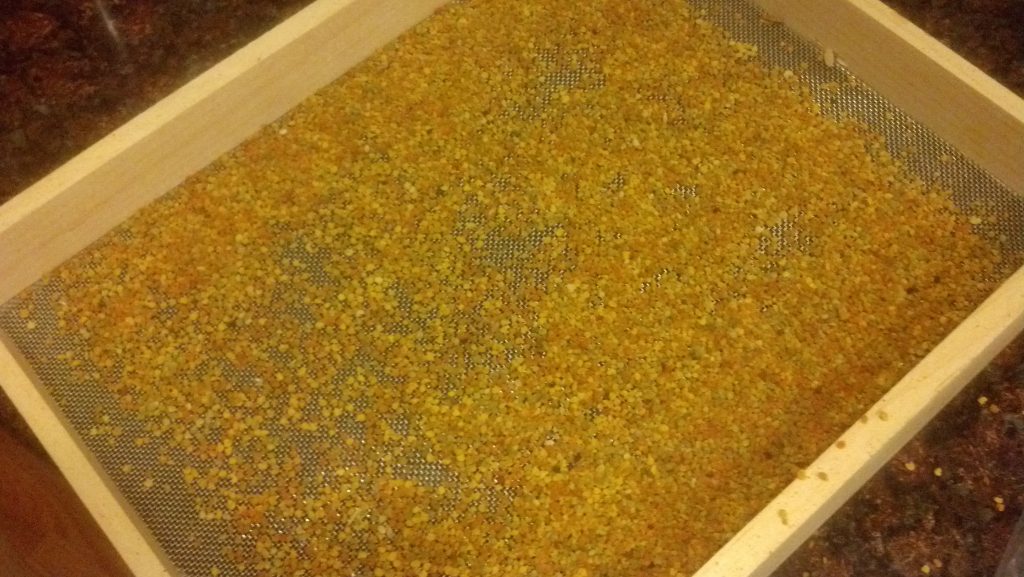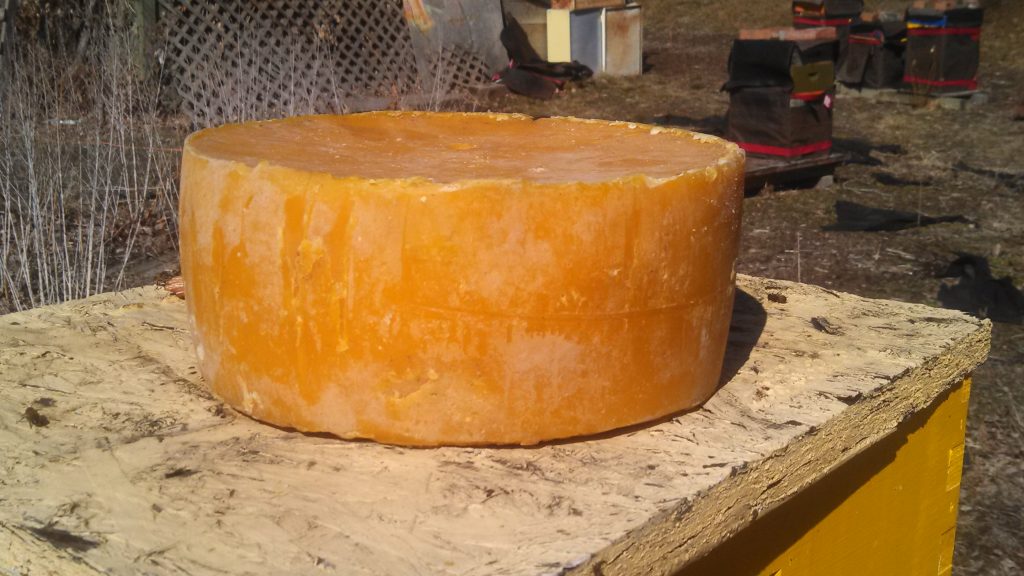
Unlike many insects bees don’t go into a hibernation in winter. Instead they make and store a lot of food to get through the winter months. They make so much that they don’t use it all. This is where we get lucky. We are able to take all of the excess stored honey, while still leaving enough for them to make it through the winter. Honey can be enjoyed in it’s comb form, as shown above, or it can be removed from the comb and eaten separately. Cut comb honey is prized for it’s flavor and has added health benefits. We have cut comb available on a limited basis depending on the season and hive productivity. Keep an eye out for it on our shop page or email us for information.

In addition to the delicious honey that bees make they also collect or produce several other wonderful things. One of the more useful and abundant products of the hive is pollen. Bees collect pollen from every flower they visit. Pollen is naturally high in proteins which the bees need for proper health. Once again, bees being bees, they collect way more than they need. So we are able to benefit from their productivity.
Beekeepers use a pollen collector, called a Pollen Trap to collect pollen from the hive. The Trap is placed in the entrance to the hive so that returning bees covered with pollen go through it on their way in. As they go through it some , but not all, of the pollen they carry is brushed off of their legs into the collector.
Pollen is used as a health supplement by people the world over. What many don’t know is that fresh pollen is very perishable so most of what is available in the market has been processed. Unprocessed pollen will be found in the freezer or refrigerated section of your local health store.
It is important to know where the pollen comes from and that you purchase local pollen in order to gain the full benefit. Many people use pollen in the spring in order to combat allergies. This benefit can only be had if you are using pollen from local plants in your area.

Another product of the hive is beeswax. Bees excrete wax from wax glands located on their lower abdominal segments. Beeswax can be used for many products from furniture polish to lip balm, as well as a host of other uses. It is highly flammable and therefore it is prized for making quality candles. Beeswax is edible and while it is mostly indigestible, it does have some health benefit owing to it’s containing plant sterol esters which have been shown to aid in the reduction of cholesterol.
Bees also produce propolis, a resinous substance that they collect from tree buds and leaves. They use it to seal up their hives and to seal off unwanted contaminants that get into the otherwise pristine environment in the hive. Propolis like beeswax has a host of uses ranging from antibacterial to cosmetic to nutritional.

